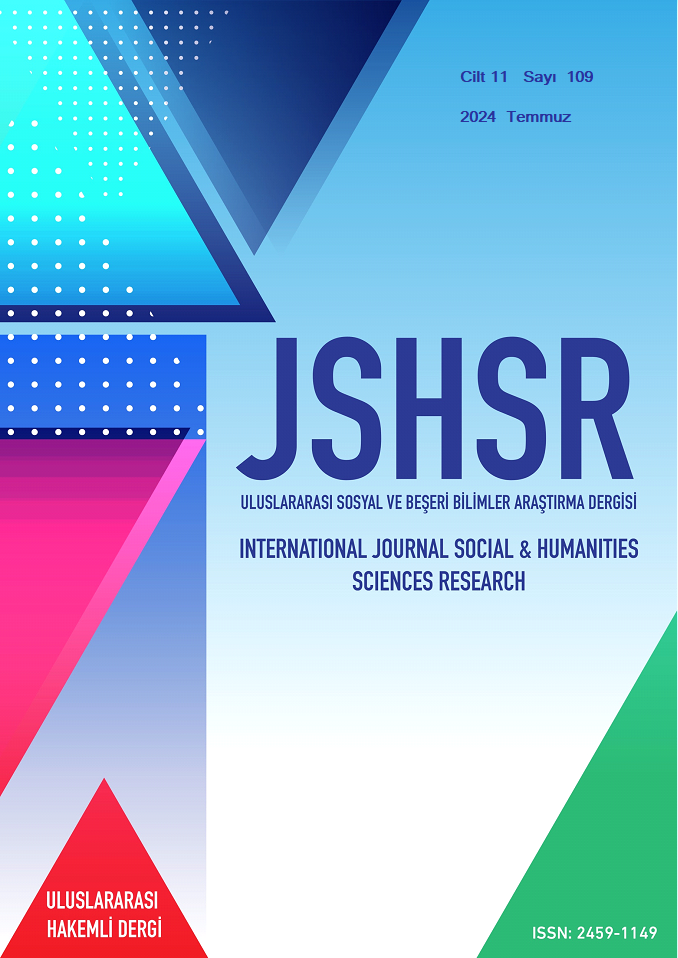Investigation of the Relationship Between Digital Game Addiction and Cerebral Lateralization and Attention Skill in Individuals Among the Age of 18-20
DOI:
https://doi.org/10.5281/zenodo.12819530Abstract
In this study, we aimed to examine the relationship between digital game addiction and cerebral lateralization and attention skills in sedentary young people. The individuals making up the sample were selected by randomization method. 100 sedentary subjects between the ages of 18-20 participated in the study voluntarily. Within the scope of the study, the digital game addiction scale and cerebral lateralization and attention tests were applied to the subjects. SPSS 22.0 (SPSS Inc., Chicago, Illinois, USA) program was used for statistical procedures. Values were presented as mean, standard deviation and standard error and were examined at the 0.05 significance level. Shapiro-Wilk test was performed to test normality. A one-way analysis of variance and LSD post-hoc test were used to analyze the differences between groups, and the Pearson correlation test was applied to examine the relationship between the obtained values. According to the results obtained, no statistically significant difference was detected between the applications in terms of digital game addiction and cerebral lateralization averages (p>0.05). Similarly, based on the sub-dimensions, it was determined that there was no significant relationship between digital game addiction and attention skills (p>0.05). As a result, it can be said that there is no positive effect between digital game addiction and the valuesof cerebral lateralization and attention skills in young people.
References
Bisiach, E., Mini, M., Sterzi, R., & Vallar, G. (1982). Hemispheric lateralization of the decisional stage in choice reaction times to visual unstructured stimuli. Cortex, 18(2), 191-197.
Cingoz, Y. E. (2017). Examining the relationship between hand preference and success in karate and taekwondo athletes by gender (female-male) [Unpublished Master's Thesis]. Institute of Social Sciences, Muğla University.
Hazar, E., and Hazar, Z. (2019). Digital Game Addiction Scale for University Students (Adaptation Study). Journal of Sports Sciences Research, 4(2), 308-322.
Hazar, Z. (2016). The effect of games involving physical activity on digital game addiction of secondary school students aged 11-14 [Doctoral thesis]. Institute of Educational Sciences, Gazi University.
Johnston, D. W., Shah, M., & Shields, M. A. (2007). Handedness, time use and early childhood development (IZA Discussion Paper No. 2752). Institute for the Study of Labor.
Kars, G. B. (2010). The effect of violent computer games on aggression in children [Unpublished Master's thesis]. Institute of Health Sciences, Ankara University.
Kaya, A. B. (2013). Development of the online game addiction scale: Validity and reliability study [Unpublished Master's thesis]. Institute of Educational Sciences, Gaziosmanpaşa University.
Kaymak, S. (2003). The effect of attention training program on the development of attention skills of 2nd and 3rd primary school students [Doctoral thesis]. Institute of Social Sciences, Ankara University.
Kojima, R., Sato, M., Akiyama, Y., Mizorogi, S., Shinohara, R., Suzuki, K., et al. (2019). Problematic internet use and its associations with health-related symptoms and lifestyle habits among rural Japanese adolescents. Psychiatry and Clinical Neurosciences, 73(1), 20-26.
Loffing, F., Schorer, J., Hagemann, N., & Baker, J. (2012). On the advantage of being left-handed in volleyball: Further evidence of the specificity of skilled visual perception. Attention, Perception, & Psychophysics, 74(2), 446-453.
Menteşe, B. (2019). The effect of sex steroid hormone levels on nerve conduction velocity, reaction time, cognitive functions and cerebral lateralization in healthy adults [Doctoral thesis], Institute of Health Sciences, Manisa Celal Bayar University.
Ögel, K. (2012). Internet addiction, understanding the psychology of the internet and coping with addiction. Türkiye İş Bankası Cultural Publications. (ss. 47-60).
Prot, S., Anderson, C. A., Gentile, D. A., Brown, S. C., & Swing, E. L. (2014). The positive and negative effects of video game play. In Media and the well-being of children and adolescents (pp. 109-114).
Sachlikidis, A., & Salter, C. (2007). A biomechanical comparison of dominant and nondominant arm throws for speed and accuracy. Sports Biomechanics, 6(3), 334-344.
Tan, Ü., & Çalışkan, S. (1987). Allometry and asymmetry in the dog brain: The right hemisphere is heavier regardless of paw preference. International Journal of Neuroscience, 35(3-4), 189-194.
World Health Organization. (2019). Sharpening the focus on gaming disorder. Bulletin of the World Health Organization. Available at: https://www.who.int/bulletin/volumes/97/6/19-020619/en/
Yen, J. Y., Yen, C. F., Chen, C. S., Tang, T. C., & Ko, C. H. (2009). The association between adult ADHD symptoms and internet addiction among college students: The gender difference. Cyberpsychology & Behavior, 12(2), 187-191.
Ziyagil, M. A., Gursoy, R., Dane, Ş., & Yuksel, R. (2010). Left-handed wrestlers are more successful. Perceptual and Motor Skills, 111(1), 65-70.
Downloads
Published
How to Cite
Issue
Section
License
Copyright (c) 2024 INTERNATIONAL JOURNAL OF SOCIAL HUMANITIES SCIENCES RESEARCH

This work is licensed under a Creative Commons Attribution 4.0 International License.


